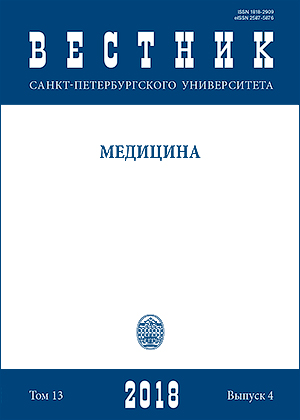Questions of pathogenesis, diagnosis and treatment of dysfunction of the sacroiliac joint
DOI:
https://doi.org/10.21638/11701/spbu11.2018.406Abstract
Chronic pain syndrome is the most common cause of disability in the working population.Pathology of sacroiliac articulation is a source of pain in 10–30 % of patients in the lower back. his publication describes the anatomy and physiology of the sacroiliac joint. The innervation of this joint is described in detail. The causes and pathogenesis of dysfunction of the sacroiliac joint are described. Also, the authors of the work thoroughly studied the clinical picture of the lesion of this joint. The diagnosis of dysfunction of the sacroiliac joint is studied in detail,where special attention is paid to diagnostic intraarticular blockades and provocative tests. The article presents a wide range of provocation tests: compression, distraction, Patrick, Hansley, Bonn, Jomana, Gate, and detailed the technique of their execution. Modern methods of treatment are widely presented: conservative, interventional (intra-articular and extra-articular injections of steroids) and minimally invasive. Special attention is paid to the high-frequency denervation of the sacroiliac joint, which describes the technique of this procedure and the criteria for selecting patients for its implementation. The algorithm of treatment of this pathology and technique of invasive interventions is described in detail below. In conclusion, the authors suggest the more frequent use of interventional and minimally invasive methods of treatment in the pathology of the sacroiliac joint.
Keywords:
the sacroiliac joint, denervation of the joint, provocative tests, intraarticular injection, joint block, dysfunction of the joint
Downloads
References
References
Downloads
Published
How to Cite
Issue
Section
License
Articles of "Vestnik of Saint Petersburg University. Medicine" are open access distributed under the terms of the License Agreement with Saint Petersburg State University, which permits to the authors unrestricted distribution and self-archiving free of charge.




